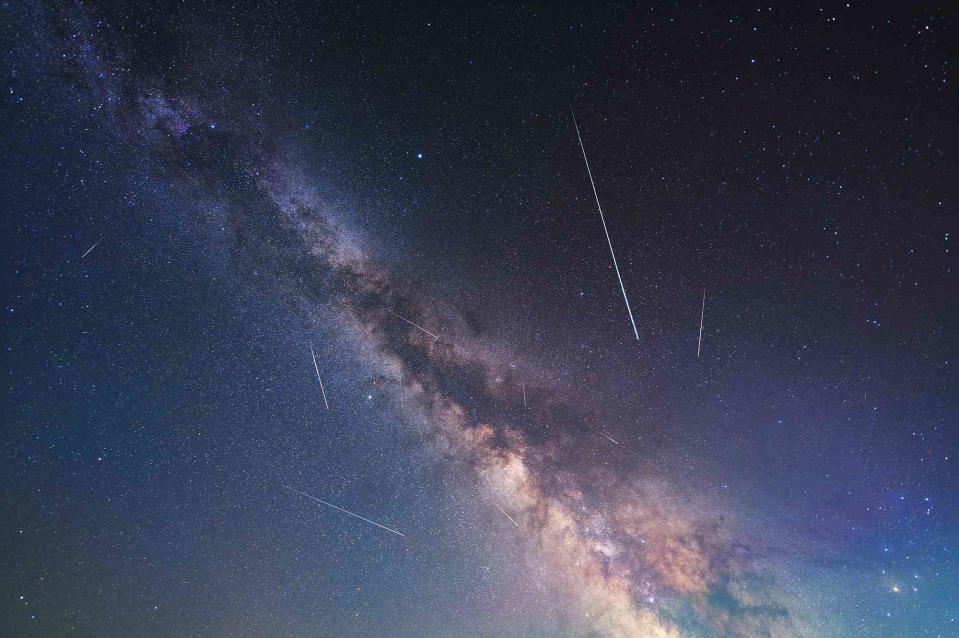See Up to 130 Shooting Stars Per Hour in Tonight's Meteor Shower
Say hello to the first meteor shower of the year tonight.

zhengshun tang/Getty Images
If you haven't had your fill of New Year's fireworks quite yet, Mother Nature will be providing her own firework show this evening into tomorrow morning. The Quadrantid Meteor Shower is due to peak around 4 a.m. EST on the morning of Jan. 4, according to Space.com — and those of us in the Northern Hemisphere are in for a great view.
Here's everything you need to know about the Quadrantids.
What Is the Quadrantid Meteor Shower?
As the Earth moves through the debris trail of a comet or asteroid on its orbit around the sun, bits of dust and rock collide with our planet. Fortunately for us, most of these small pieces of debris burn up in the atmosphere before reaching the ground — and that's what produces a meteor, or shooting star. The Quadrantids occur when the Earth encounters the debris trail of the asteroid 2003 EH1, per NASA. At its peak, the meteor shower is expected to produce 130 meteors per hour.
The Quadrantids are named for the defunct constellation Quadrans Muralis, which has since been incorporated into the constellation Bootes. The meteors from this shower appear to emanate from this area of stars in the night sky.
When Is the Quadrantid Meteor Shower?
The Quadrantids run from Dec. 26 to Jan. 16, but the peak is exceptionally brief: just a few hours. (Most meteor showers have a peak that lasts a day or two, according to NASA.) That peak is anticipated to occur at 4 a.m. EST on Jan. 4, with the number of meteors ramping up in the hours leading up to the peak and then waning in the hours after. That means the best time to see the Quadrantids is from around midnight until dawn — that's tonight into tomorrow morning.
How Can I See the Quadrantid Meteor Shower?
The best way to see any meteor shower, including the Quadrantids, is to head to a dark place far from light pollution. Once there, let your eyes adjust for about 20 minutes, then look up at the sky and wait. According to the American Meteor Society, the Quadrantids are known for producing bright fireballs, so even if you're somewhere with light pollution, you still have a chance at seeing meteors tonight.
When Is the Next Meteor Shower?
Later this month, stargazers can see the γ-Ursae Minorid meteor shower — which is less active than the Quadrantids — and then will have to wait until the Lyrids will peak between April 21-22 per the American Meteor Society. Unfortunately, conditions won't be good for this meteor shower, as a nearly full moon will drown out all but the brightest shooting stars. After the Lyrids will be the Eta Aquariids, which are predicted to be strong this year — that meteor shower will peak on the night of May 4 into the following morning.
For more Travel & Leisure news, make sure to sign up for our newsletter!
Read the original article on Travel & Leisure.

